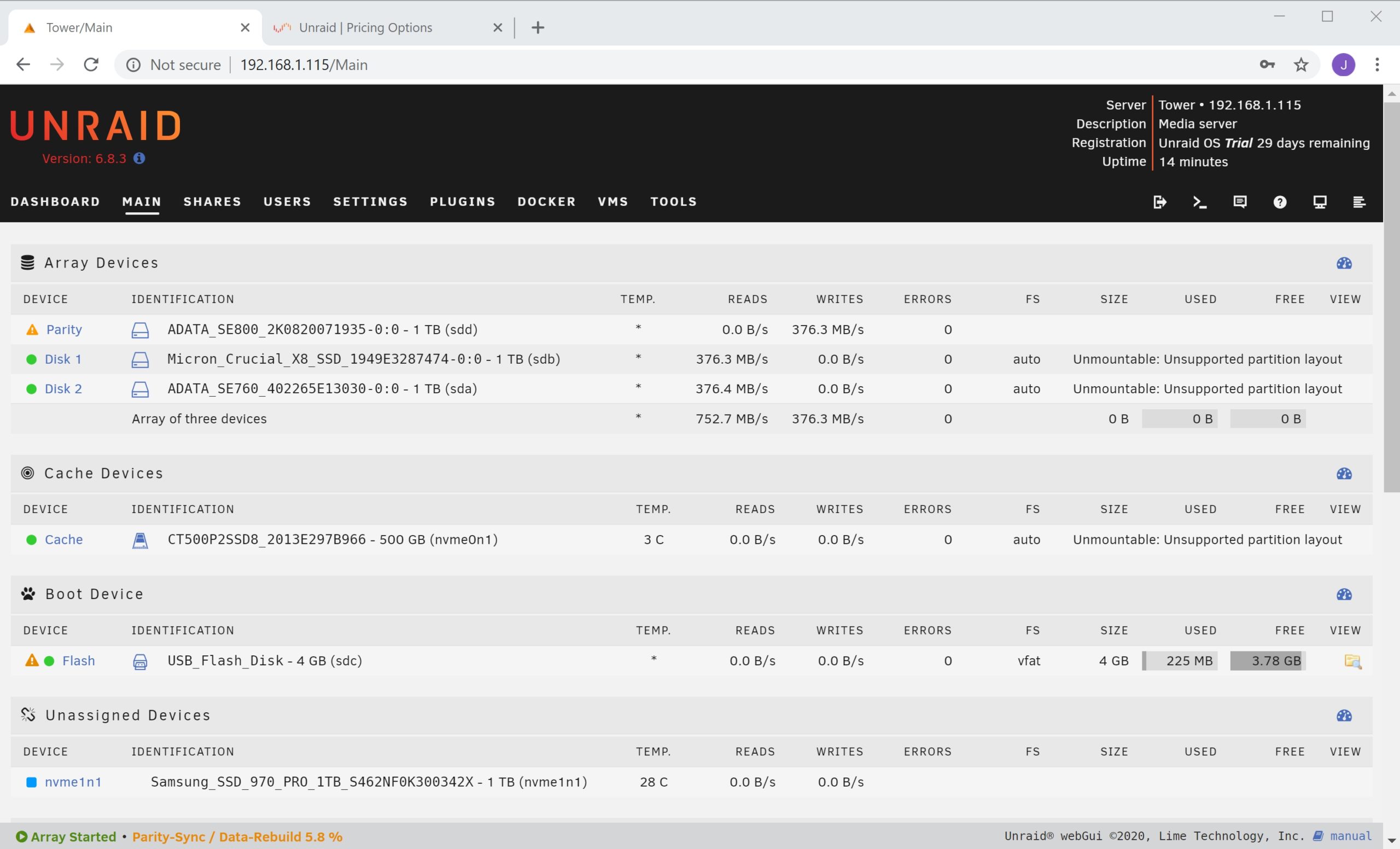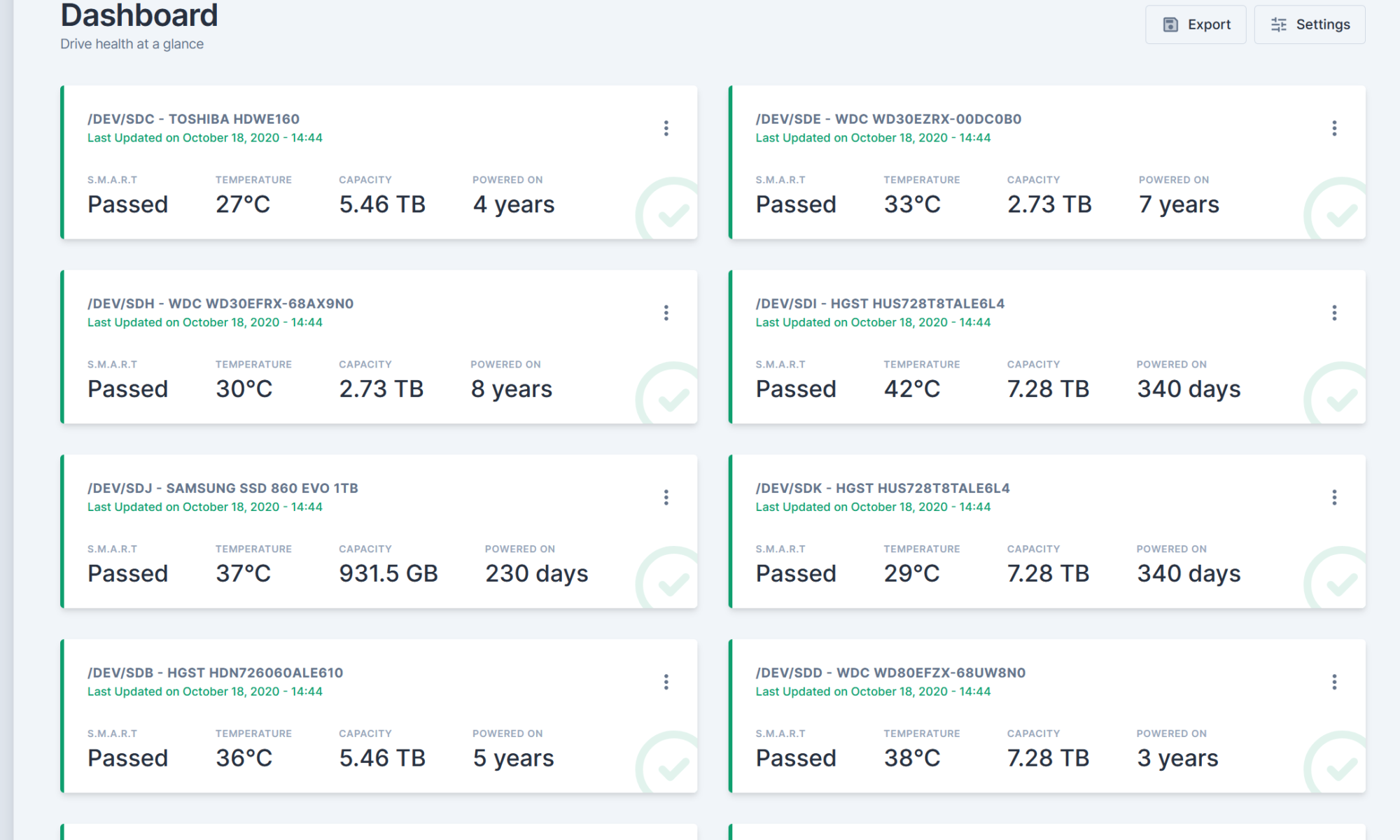

An extra cache drive mirroring the first to ensure that transient data won’t get lost *. The first answer is that the additional drive bays provide room to improve resilience. You’ll see below that mirroring the SSD isn’t something I’m contemplating. * This will depend on how far you trust the SSD. And all this will be happening dynamically-this is what I’m calling the “organic quality” of UnRAID you won’t find elsewhere *. As drives become larger your array will be able to shrink in drive numbers while increasing in capacity.
#Unraid setup ssds install#
If you take this opportunity to invest in one of the newer larger drives you’ll be able to install that one as the replacement parity drive and reassign the previous parity drive to duty as a data drive in the array. The odd hard drive will fail now and again and you will be able to swap it out for a new one without loss of data. And now you have a powerful, truly flexible, data storage device. Then you pile them into a pensioned-off PC, run them through the gruelling preclear process and, if they pass, assign them to the array. I’ve said that what originally attracted Tested Technology to the UnRAID proposition was being able to start with whatever drives you have to hand: you can shuck them from USB storage devices, you can rescue them from defunct desktops and laptops, release them from the prison of a more stringent NAS. Five hundred quid would give you a reliable 16TB to start with and an UnRAID basic licence would add another £45-a really useful startup NAS with endless room for expansion and experiment at a price per terabyte it would be hard to match elsewhere.
#Unraid setup ssds Pc#
Of course, if you have a spare PC ready to run UnRAID, it would make perfect sense to start out by investing in a single large hard drive. But while we’re philosophising about UnRAID, let me list here some thoughts that have struck me about how it might typically develop for you if you follow this path. (The truth is, this process is so simple there’s not much to write about). I’ll get onto the addition of the cache drive in a moment. An UnRAID system is elastic, whether you want to expand it, contract it, run other stuff inside it or around it or even move it (as we’ve already seen) from one chunk of hardware to another. Unlike, for example, Manek’s TrueNAS system, which you design, build and then that’s it-until you need to expand it, a process that will almost certainly demand another design and build. But one thing I’ve come to realise during this adventure is that there’s no “final touch” to an UnRAID server. Yes, this chapter is the last planned for this series. That’s quite the wrong way of putting it. I WAS GOING TO START THIS CHAPTER by telling you that the SSD cache would be “adding the final touch” to this UnRAID NAS. And speed it up significantly if it is a solid state drive (SSD). An intervening cache drive, needing none of the parity calculations, can speed up the data transfer. The delay while this calculation and double drive write happen can make the UnRAID system look slow to accept data. In this way, a communication channel that may be slow can be represented to the sending system as being speedy.Īs we’ve discussed, all data newly written to the UnRAID array has to have its parity calculated and the result written simultaneously to the parity drive. The cache pretends to the sending system that the data have arrived at their destination and will at some point relay them on there. Typically, this will be a bunch of data on its way to somewhere else. But these all share the idea that something-usually a set of binary data-is being kept somewhere in a “hidden pocket”. The concept turns up all through information technology in a number of different contexts and physical implementations.

T he word “cache” comes from the French, cacher, meaning “to hide”.
#Unraid setup ssds pro#
Data Sheet: DeBloating the Huawei P30 Pro.More About Us: Ads, Affiliate Links and Amazon.


 0 kommentar(er)
0 kommentar(er)
